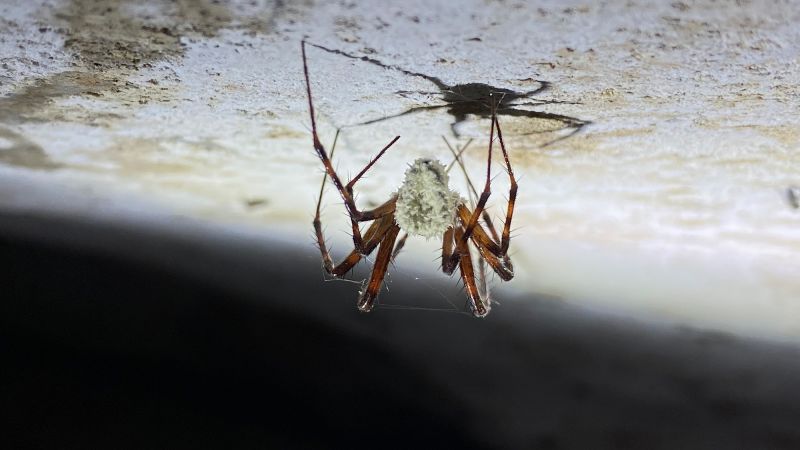In a remarkable discovery, scientists from Europe have identified a new species of fungus named Gibellula attenboroughii, which has an astonishing ability to manipulate the behavior of cave-dwelling spiders, turning them into “zombies.” This phenomenon involves the fungus luring spiders out of their webs, leading to their premature death, after which it utilizes the corpses to propagate its spores. This incredible interaction sets the stage for further research into the evolutionary mechanisms and ecological impact of such parasitic relationships within nature.
The study concerning Gibellula attenboroughii was published on January 24 in the journal Fungal Systematics and Evolution. It bears a striking resemblance to the behavior observed in the well-documented zombie ant fungus, which is notorious for controlling its host’s movements for the fungus’s reproductive benefits. According to Dr. João Araújo, mycologist at the Natural History Museum of Denmark and assistant professor at the University of Copenhagen, this finding represents a new genealogical origin of behavior manipulation among fungi, which is unusual when looking at known parasites that influence animals.
There remain many unanswered questions about how this fungus interacts with the arachnid’s central nervous system. Researchers are seeking to understand the genetic and biochemical pathways that enable Gibellula attenboroughii to effect its mind-controlling capabilities. They hypothesize that the fungus releases certain metabolites, which may alter the spider’s behavior, nudging it towards areas where it can be more effectively exposed to wind currents that assist the fungus in its attempts to release spores.
The discovery of this fascinating organism has opened new avenues for research into the realm of fungi that control animal behavior, shining a light on the expansive diversity of fungi still waiting to be discovered. The newly classified species belongs to a larger group of fungi specifically known to infect spiders. Previous studies indicated that a different species of the Gibellula genus, found in Brazil, could also influence spider behavior, but not as overtly as G. attenboroughii does.
Observations to date regarding G. attenboroughii have shown it infecting two species of cave-dwelling orb-weaver spiders, Metellina merianae and Meta menardi, both indigenous to Europe. Interestingly, the first encounter with this peculiar fungus was reported back in 2021 during a filming session at Castle Espie Wetland Centre in Northern Ireland. At the time, the crew noted the distinct behavior of an infected orb-weaver spider, which had strayed from its web to position itself conspicuously before succumbing to the parasitic fungus.
Further investigations into the lives of these infected spiders in caves across Northern Ireland and Ireland have revealed a consistent behavioral pattern – the infected specimens were often found in open spots in the cave ceilings or walls, contrary to their usual preference for remaining sheltered within webs. Dr. Jay Stafstrom, an arachnid sensory ecology expert at Cornell University, highlights the intrigue surrounding the fungus’s ability to so profoundly alter spider behavior, pushing them into vulnerability for the sake of its reproductive cycle.
Though the science is still evolving, researchers like Araújo have expressed optimism in understanding not just the mechanics at play but also the broader ecological implications of such behaviors in maintaining the balance of ecosystems. These fungal species, which may seem threatening, have co-evolved with their hosts over millions of years, suggesting a symbiotic relationship rather than a purely parasitic one.
Despite the engaging parallels to speculative fictional narratives, such as the HBO series “The Last of Us,” which draws inspiration from the zombie ant fungus, experts reassure that G. attenboroughii only targets spiders. Human health is not at risk from this newly discovered fungus, and the study of such interactions may eventually lead to beneficial applications in areas like agriculture or even medical sciences.
The future of Gibellula research remains promising, with continued investigations aimed at deciphering the evolutionary history and complex interactions of these fascinating fungi. As Araújo optimistically notes, learning more about the way such fungi influence their hosts could eventually yield groundbreaking insights for understanding and addressing human neurological diseases like Alzheimer’s. The narrative emphasizes how the study of fungal life can provide new perspectives on the intricate web of life that surrounds us.



